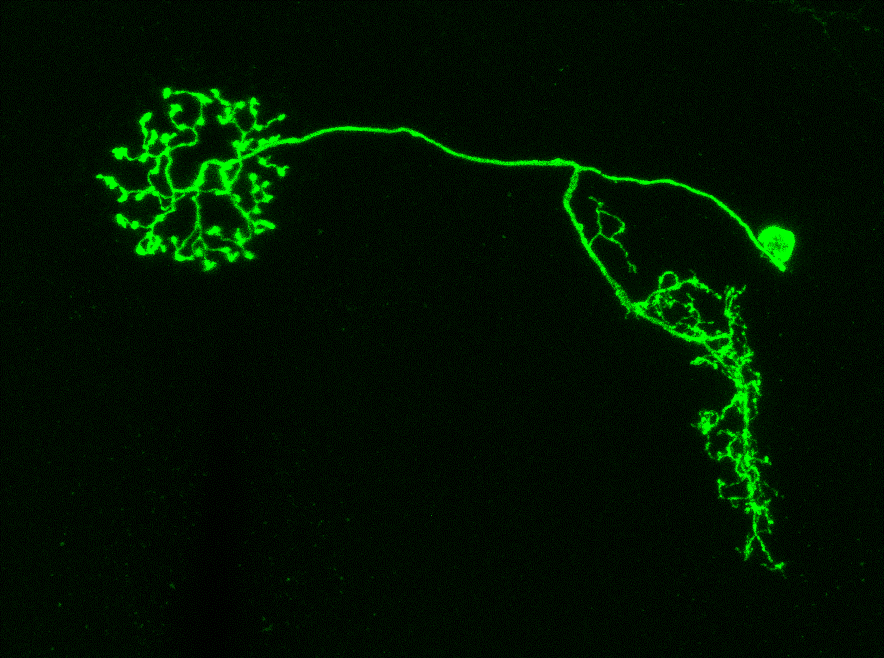By Tatsuo Okubo
To navigate in a complex environment, animals need to rely on multiple different cues. Recent works in flies and rodents have unraveled how visual cues are used to update the heading representation in the brain. However, how other navigational cues are processed in the brain were not well understood. In this study, we focused on wind, as there are many behavioral studies demonstrating that insects use wind direction cues during navigation.
We began by demonstrating that the activity of “compass neurons”, which keep track of the fly’s current heading, are influenced by wind direction cues. We then found that a group of neurons, called ring neurons, carry wind information to the compass neurons. Interestingly, these ring neurons were different from ring neurons that were known to carry visual inputs to the compass. This suggests a model where different types of ring neurons convey different cues, and these all converge at the level of compass neurons.
Finally, we have mapped out a neural pathway that connects the antennae, which are used for sensing wind direction, and the compass neurons. We characterized how this mechanosensory pathway transforms the information about wind-induced antennal movements into representation of heading direction. This provides an exciting opportunity to study multimodal integration and navigation at the cellular and circuit level.

A ring neuron in the fly brain that responds to wind direction.
Tatsuo Okubo is a postdoc in the lab of Rachel Wilson at Harvard Medical School/Howard Hughes Medical Institute.
Learn more in the original research article:
A Neural Network for Wind-Guided Compass Navigation. . Neuron 107, Pp. 1-17. 7/17/2020.
News Types: Community Stories
